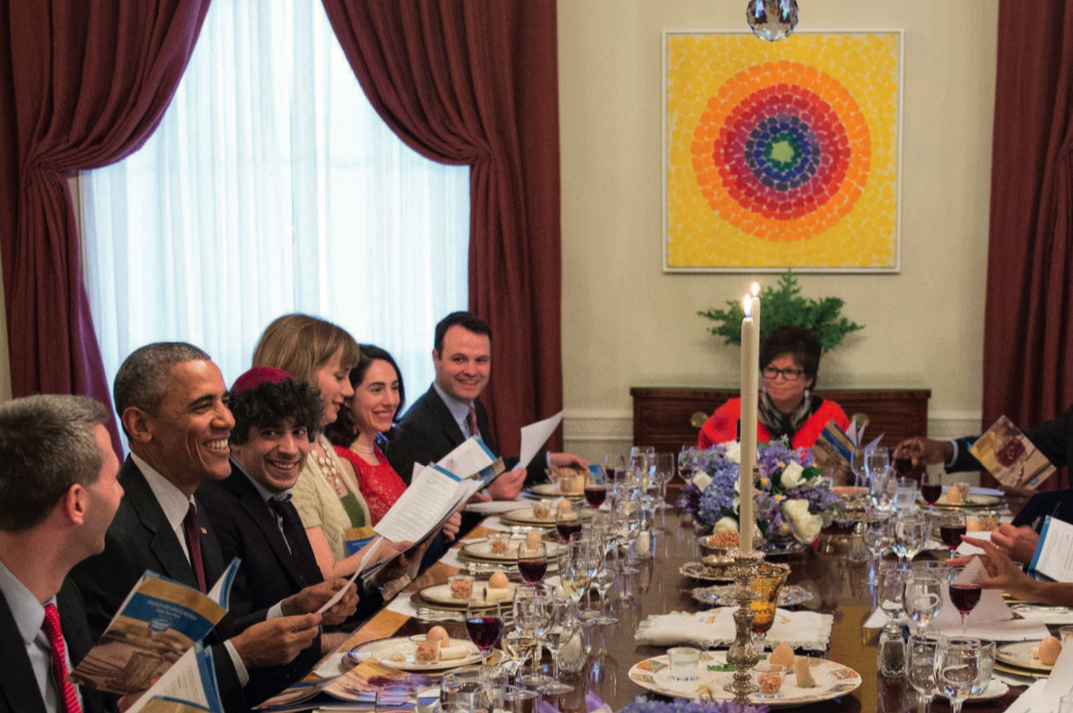Artist: Alma Woodsey Thomas
Abstract painter Alma Woodsey Thomas (1891-1978) devoted her life to the
youth of Washington and other local communities, both as a teacher and as
an organizer of cultural events. In 1924 she became the first graduate of
Howard University's School of Fine Arts. She possessed a natural sense
of genius for color and form and upon retiring from teaching middle school art
at age 68 embarked on a successful career as a professional artist.

"RESURRECTION" by Alma Thomas
This painting was unveiled as part of the White House Collection in 2015,
hanging in the dining room.
Alma Thomas is the first African-American woman to have art in
the White House Collection!
Alma Thomas' early work was representational in manner, and
then and upon classes at Howard and training under James V.
Herring and Lois Mailou Jones her work became more abstract.
Thomas would not be recognized as a professional artist until her
retirement from teaching in 1960, when she enrolled in classes
at American University. There she learned about the Color Field
movement and theory from Joe Summerford and Jacob Kainen
and became interested in the use of color and composition.
Within twelve years after her first class at American she began
creating Color Field paintings, inspired by the work of the
New York School and Abstract Expressionism. She worked
out of the kitchen in her house, creating works like Watusi
(Hard Edge) (1963), a manipulation of the Matisse cutout
The Snail, in which Thomas shifted shapes around and
changed the colors that Matisse used, and named it after
a Chubby Checker song.
Her first retrospective exhibit was in 1966 at the Gallery of
Art at Howard University, curated by art historian James A. Porter.
For this exhibition she created Earth Paintings, a series of nature
inspired abstract works, including Wind and Crepe Myrtle Concerto
(1973) which art historian Sharon Patton considers "one of the
most Minimalist Color-Field paintings ever produced by an
African-American artist." These paintings have been compared
to Byzantine mosaics and the pointillist paintings of
Georges-Pierre Seurat. A friend of Delilah Pierce, Thomas and
Pierce would drive into the countryside where Thomas would
seek inspiration, pulling ideas from the effects of light and
atmosphere on rural environments. Thomas was, in 1972, the
first African-American woman to have a solo exhibition at the
Whitney Museum of American Art, and within the same year
an exhibition was also held at the Corcoran Gallery of Art.
(WikiArt)
How to Paint Like Alma...
MATERIALS
Multimedia paper
Tempera paint - variety of colors
Compass and Pencil
Water,Variety of Brushes, Paint Trays
DIRECTIONS
Plan out a design. If the painting will be centered around a circle,
use a compass to draw the circle first. The composition does not
have to be centered around a circle or shape.
Be creative with the plan! Paint the circle (or shape) solid with
tempera paint.Paint dashed lines around the circle/shape until
the paper is full. Be creative with color choices, size, and positioning.
Use a variety of different brush sizes.
EVALUATION
Did the student plan a composition based on the style of
Alma Thomas?
Did the student use a variety of different line/dash sizes?
Did the student plan and use a variety of different colors?
Did the student fill the entire paper with dashed lines,
completing the painting?
Examples…



















































